Jack Bayly
Evan Brown
Quinn Curtin
Denis Didenko
The Problem –
We decided to solve the issue of organization and efficiency in supermarkets.
We came across these problems through conversations with managers and staff members at various grocery stores across the northeastern United States. Generally speaking, the managers had trouble with staff having little knowledge of the store layout and sales, while staff did not want to be interrupted from their assigned tasks to help customers. The managers wanted more people to come to the store and for sales to be highlighted as well and staff members also wanted more organization in the store.
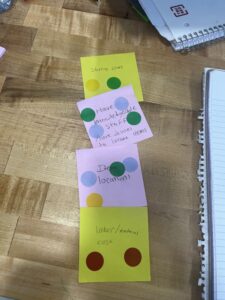
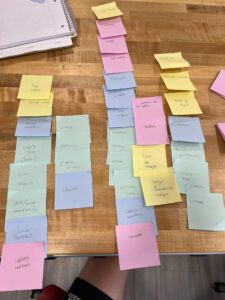
The Persona –
Our primary personas were both the store managers and workers. However, a byproduct of our design was that we also designed for customers. This happened because if customers know their way around the store, and know prices and sales, they are less likely to bother a staff member cleaning up a mess to help them.
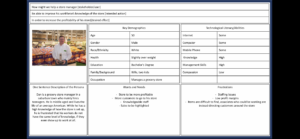
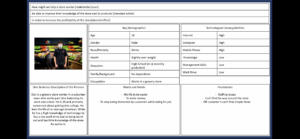
The Anti-Persona –
We did not design for people who don’t interact with the supermarket daily. This includes investors and owners, who leave the details to the managers. We also decided to exclude the supply chain workers that do not work in the store. This is because most of these people do not interact with the story daily so the slight inefficiencies do not heavily impact them in a daily market.

Designing the Solution –
We efficiently used problem framing to hash out our problem. We created a list of needs and wants, and quantified each of them. This served as a checklist when moving forward to check if each proposed solution would fit within the bounds. Our functional requirements were designed to meet and achieve our clients needs. We used a few different methods to brainstorm ideas. While we did try the gallery and 6-3-5 sketch method, we found that some of the ideas produced became too outlandish (implanting microchips, complete robot domination, etc). We decided to bring up our functional requirements and worked together using Post-Its to throw out ideas and actively comment on them. We arrived on an app, and designed it for functionality and ease of usage. We then decided to prototype this solution by creating a paper GUI that we had various classmates “navigate” to complete a list of tasks.
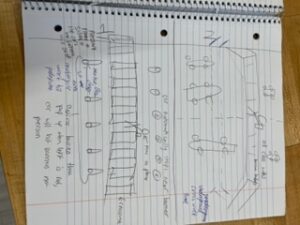
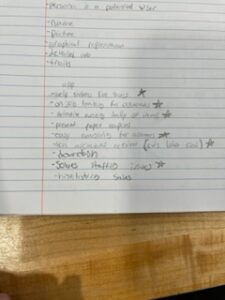
The Solution –
Our final solution is a mobile phone-based app designed for both customers and staff members. Our app features a sign-in page for both customers and staff members. Condensing everything into one app, rather than having customers and staff download separate apps, increases the app’s accessibility to those who may not have much technological competence. It also decreases costs for the store manager as they only have to pay for the development and the maintenance of one site rather than two. We decided that for security purposes, staff members would only be able to create an account through an email sent out after they were hired. However, customers were required to create an account before using the app. The app saved customers coupons, and more importantly, helped them navigate around the store by giving items locations and stock and price through a search feature. This frees up staff time to be able to do their assigned job at the store, whether that be working behind the deli counter or taking care of shopping carts in the parking area. The staff side was designed to increase productivity of staff members and to increase their overall knowledge of the store. Aside from the floor information that customers were given access to, staff members also had access to their personal schedules and the backrooms stock as well. Our app was overall designed with a sense of intuitiveness. The GUI is easy to navigate and features bright contrasting colors that highlight text and links.
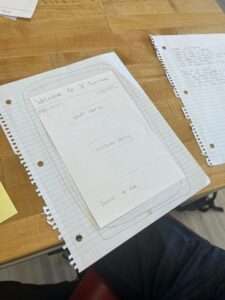
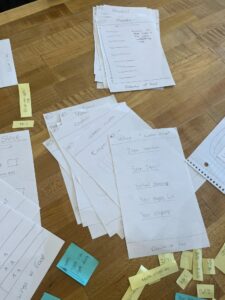
Testing the Prototype –
We tested our prototype on our classmates, taking notes on how they navigated the app and where they had trouble completing a task. We then used this input to improve our app, for instance, allowing someone to add an item right from the virtual catalog to their shopping list. However, we determined that we had a working solution once various groups were able to fully navigate the app without needing assistance.
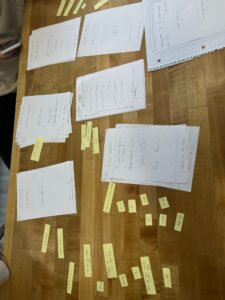
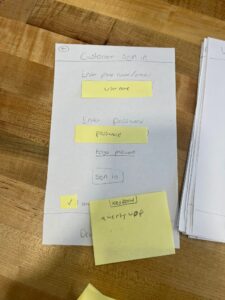
Teamwork –
Our team worked well together and was generally focused. We were able to split up tasks and make sure that each individual aspect of the project got enough attention, rather than focusing four people on one individual detail.
One of the challenges our team faced was collecting initial data. None of us were comfortable going downtown to a grocery store or interviewing strangers. Instead, we decided to use our phones as a buffer. We called grocery stores in our area and talked with staff members that we knew in order to gather data. We also faced some challenges when trying to design the app itself. While we had settled on the idea, none of us had very much coding experience, so we decided to drop the idea of producing an actual app and made a paper version instead.
In the future, we would like to try and construct a prototype that plays more towards our strengths.